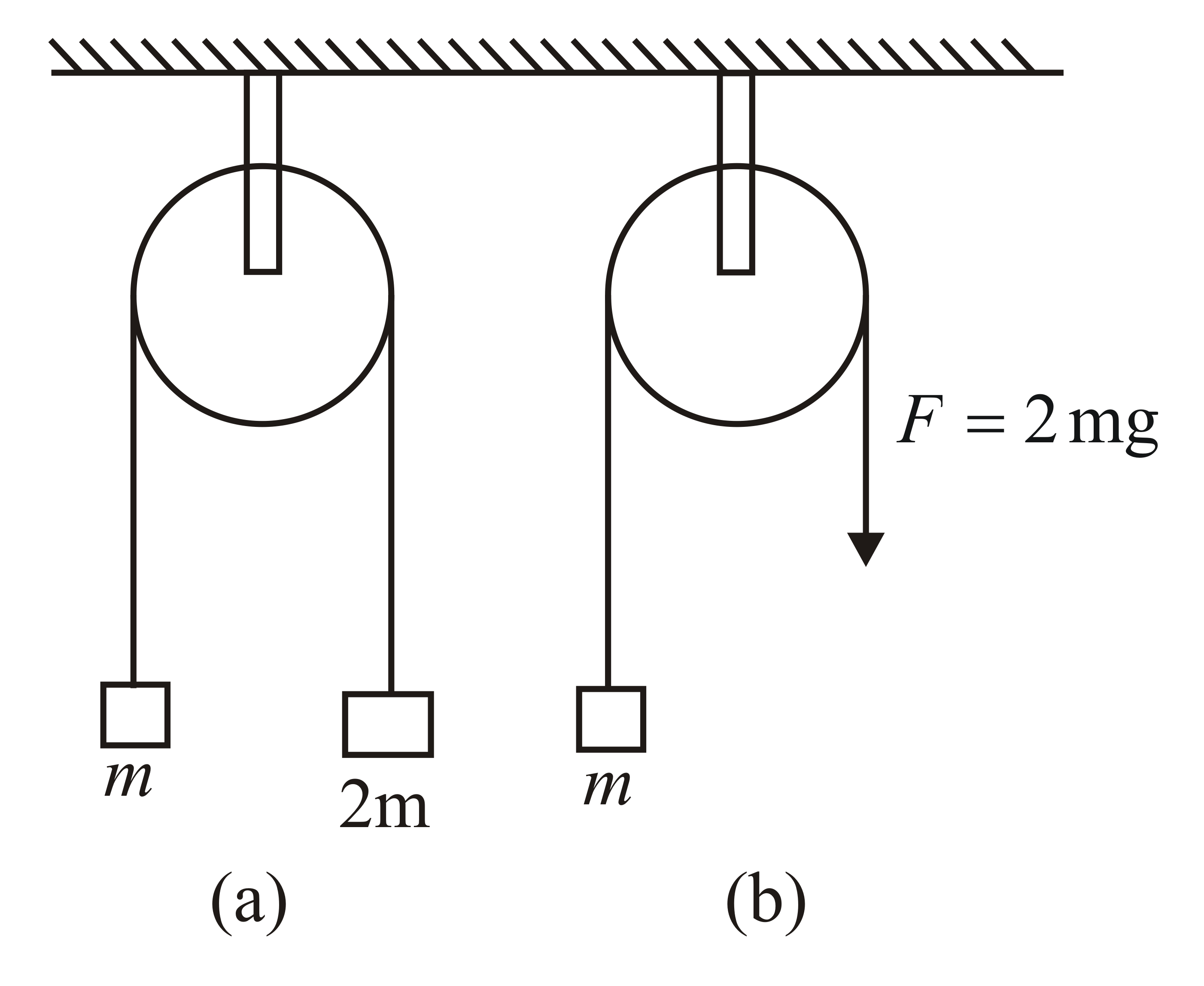Q.
The pulley arrangements shown in the figure are identical, the mass of the rope being negligible. In case $\left(\right.a\left.\right)$ mass $m$ is lifted by attaching a mass of $2m$ to the other end of the rope. In case $\left(\right.b\left.\right)$ the mass $m$ is lifted by pulling the other end of the rope with a constant downward force $F=2mg$ , where $g$ is the acceleration due to gravity. The acceleration of mass $m$ in case $\left(\right.a\left.\right)$ is

NTA AbhyasNTA Abhyas 2022
Solution:

